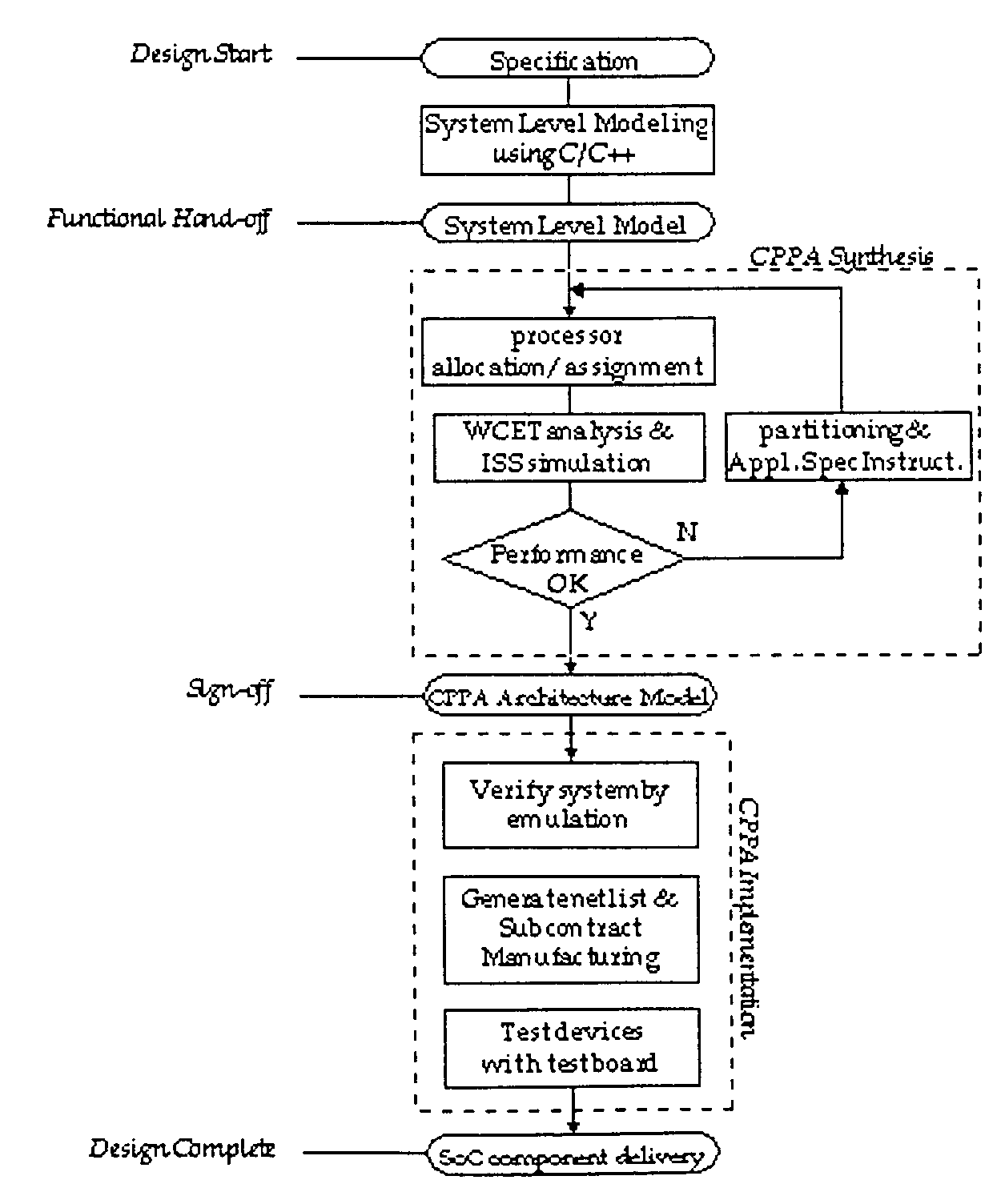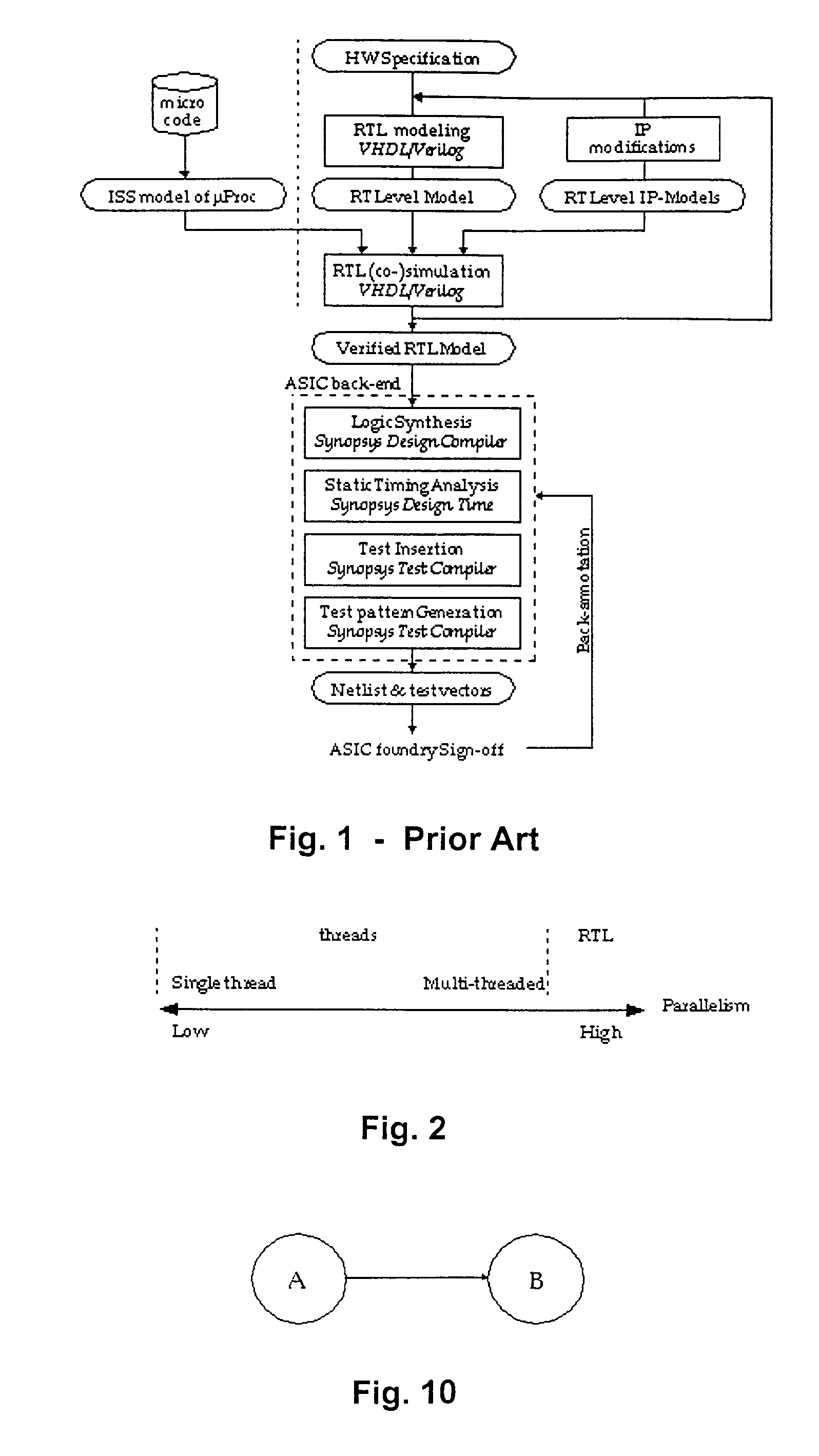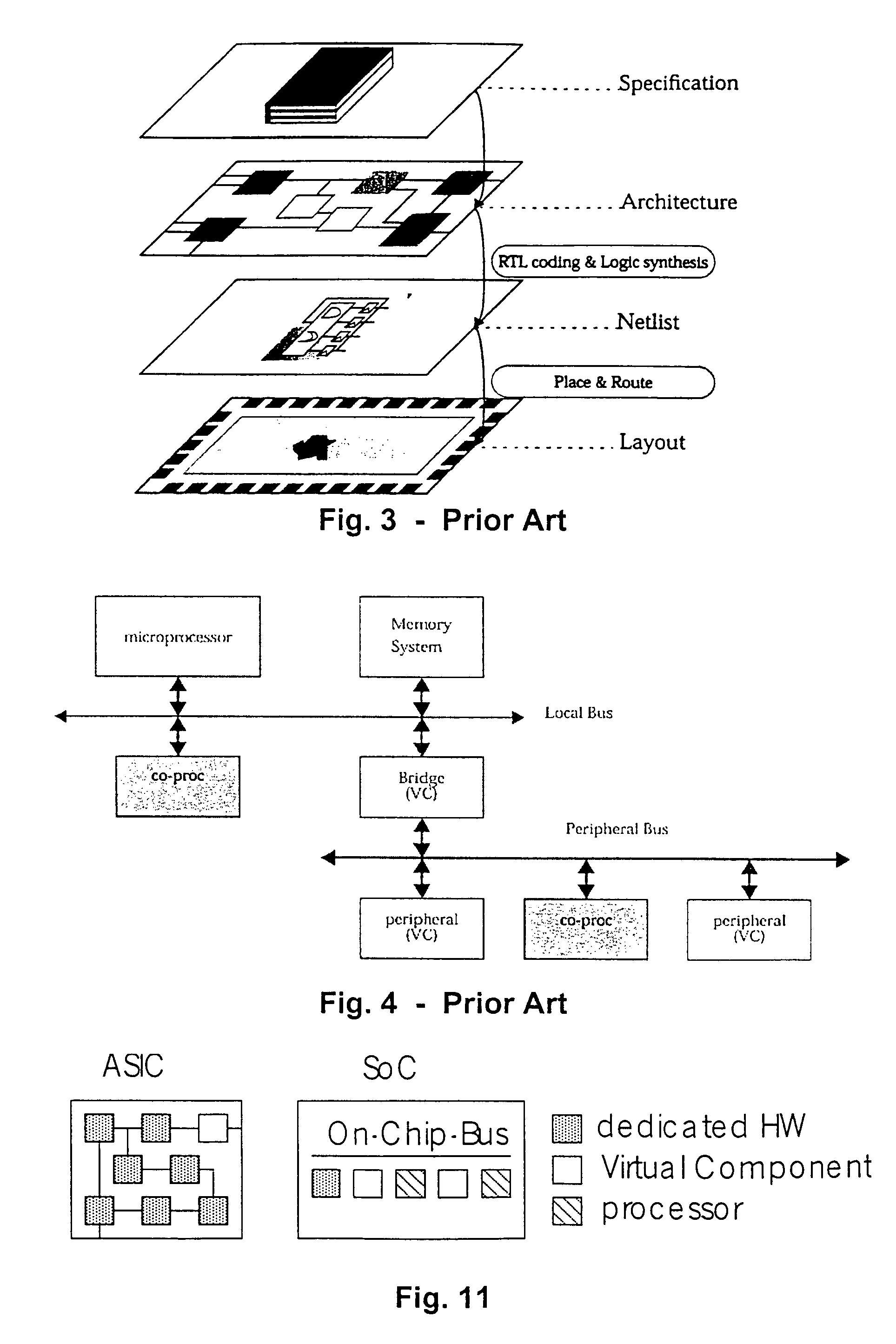Array of parallel programmable processing engines and deterministic method of operating the same
- Summary
- Abstract
- Description
- Claims
- Application Information
AI Technical Summary
Benefits of technology
Problems solved by technology
Method used
Image
Examples
example 1
FIR Filter
[0263]The filter in this example is a linear phase 32-tap FIR filter for 16-bit samples and 12 bit coefficients. The result is saturated at + / −219 and then scaled by 0, −6, −12 or −18 dB. The FIR filter concept is shown in FIG. 17, and an FIR implementation diagram is shown in FIG. 18.
[0264]Several alternatives have been investigated all of which represent embodiments of the present invention:[0265]Solution 1: All the operations are performed using the basic instruction set of the generic ASIP. All multiplications are expanded into a series of shifts and additions.[0266]Solution 2: with MAC co-processor: A coprocessor has been added to the processor to perform the multiply-accumulate operation. It is mapped into the processors memory space, and occupies 4 addresses: one to initialize the accumulator register, one to set the first operand, one to set the second operand and to trigger the multiply-accumulate operation, and one to read back the accumulator register.[0267]Solu...
example 2
CRC Encoder
[0277]This example calculates the USB data CRC on an incoming bitstream divided in frames of 3200 bits. After every frame the CRC is appended to the data stream. The incoming and outgoing data are organized in 32-bit words. A functional diagram of a CRC encoder example is shown in FIG. 19.
[0278]Two alternatives have been investigated:[0279]Solution 1: The first alternative is a pure software solution. Delay line and coefficients are implemented in the processors 32 bit numeric type, which allows an efficient implementation.[0280]Solution 2: The CRC extension unit contains a 32-bit CRC register and a 32-bit coefficient register. It is able to update the CRC register for 8 subsequent data bits (the 8 lowest bits of the argument) in one clock cycle. The return value is the argument shifted to the right by 8 bit positions. So the CRC can be updated for a 32-bit argument by invoking the CRC update instruction 4 times. Besides the CRC update instructions, the unit also contains...
example 3
Reed Solomon Encoder
[0284]Reed Solomon encoding follows a scheme similar to a CRC calculation. However, while the ‘typical’ CRC circuit operates on bits, the Reed Solomon Encoder processes multiple bits (in the present case 8). The CRC AND is replaced by a Galois Field multiplication and the XOR by a Galois field addition. The datastream to be encoded is divided in blocks—239 bytes in the case of this example. After initialisation of the delay line to all zeros, each byte of the datablock is fed into the encoder. At the end, the content of the delay line (16 bytes) is appended to the datablock. The incoming bytes are interpreted as the polynomial representation of a number in GF(28) (i.e.: the bits of the data are the coefficients of the polynomial). A functional diagram of the RS encoder is given in FIG. 20, and an implementation diagram is given in FIG. 21.
[0285]Several alternatives have been investigated:[0286]Solution 1: Software-only solution: The GF(28) addition is implemented...
PUM
 Login to View More
Login to View More Abstract
Description
Claims
Application Information
 Login to View More
Login to View More - R&D
- Intellectual Property
- Life Sciences
- Materials
- Tech Scout
- Unparalleled Data Quality
- Higher Quality Content
- 60% Fewer Hallucinations
Browse by: Latest US Patents, China's latest patents, Technical Efficacy Thesaurus, Application Domain, Technology Topic, Popular Technical Reports.
© 2025 PatSnap. All rights reserved.Legal|Privacy policy|Modern Slavery Act Transparency Statement|Sitemap|About US| Contact US: help@patsnap.com



